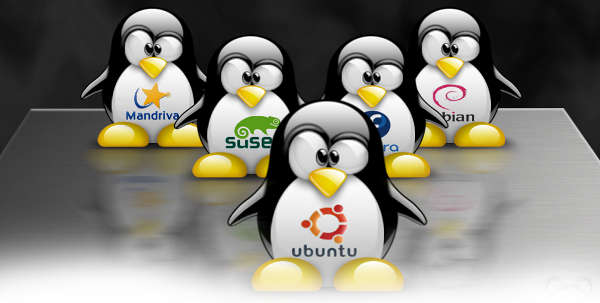
Open source has opened minds and provided a great amount of freedom of choice not just to organisations but to our government as well. In my view, open source has brought about a change in the way we view and adapt to technology. We are seeing a paradigm shift from packaged software to open source standards not just within organisations, but also at the government level. A significant amount of government administration processes have been simplified by employing various open source tools.
In the last five years, there has been a sudden rise in open source developers being hired. There is a huge untapped potential for developers in the open source domain. However, it remains to be seen what measures the government is taking at the central and the state levels to implement this technology and how it is addressing the challenges associated with migrating to open source.
Both at the central and state levels, governments have formulated policies promoting the adoption of Linux and other open source software for several years now. Initiatives such as the National Resource Centre for Free and Open Source Software (NRCFOSS) and BOSS Linux from Centre for the Development of Advanced Computing (C-DAC) point to the governments level of involvement in spreading awareness about and driving the adoption of Free and Open Source Software (FOSS). Individual bodies such as C-DAC and the National Informatics Center (NIC) have made enormous contributions to the adoption and migration of operations on the open source platform.
The governments emphasis on open standards such as the Open Document Format (ODF) has also helped create a favourable climate for the adoption of FOSS within the government. Setting up independent bodies to execute OSS adoption/migration projects is evidence of the high interest levels in this sector. For example, the State government of Assam insists that all office documents be shared only in the Open Document Format to maintain compatibility and this is a statutory message that appears in all mails.
Similarly, the IT policy of the Government of Kerala is also very supportive of open source. In recent years, the hardware and software procurement policies of our government have been made largely vendor-neutral, creating a level playing field for Linux and open source software. Several massive projects such as the state service gateways, the National Knowledge Network, etc., are in the development phases now and for most of them the entire infrastructure is new, so Linux and open source software have been adopted.
“The policy on Open Standards for e-governance” notified by the Government of India in November, 2010 mandates adoption of royalty free open standards for all e-governance projects. This brings in a level playing field for Open Source software in the multi-billion dollar e-governance market in India.
Similarly, private organisations are realising the importance of migrating to OSS. Sectors like BFSI and telecom currently derive the maximum benefit of OSS. They are realising that OSS eventually yields better results in terms of quality, performance and pricing.
Adoption challenges in enterprises
The adoption of OSS at the desktop in enterprises faces several challenges because of the legacy of poorly written client-server applications, and Web applications “optimised” for Internet Explorer 5.0, etc. Some of the other key hurdles are discussed below:
Applications — the biggest bottleneck for Linux adoption
Some time ago, a major financial institution in India was evaluating Linux as an option for its desktops. It had more than 50 custom applications, most of which were Web applications that had been developed over the last decade. The Web applications were supposedly platform-agnostic, but when they were tested on a Linux desktop, it was discovered that just 10 per cent of the applications worked flawlessly.
The rest had many compatibility issues, especially with Active-X controls, IE-specific Java script code, the use of IE-specific code, invocation of locally installed Windows applications from within the Web applications, etc. The company found that the only way it could successfully migrate to Linux on the desktop was by first making all its applications truly platform agnostic at the client level.
An interesting side effect of migration is that many organisations suddenly realise the importance of having access to the source code. When an organisation wants to transform its legacy apps to cross-platform apps, it often finds that it does not have access to the source code to most of the custom developed applications.
It is almost impossible to make any changes to the applications, as the firms do not have any ongoing maintenance contract with the original vendor that developed the software, nor do they have access to the source code.
Major ISVs are not enthusiastic
This is a classic chicken-or-egg scenario. The packaged software supplied by major ISVs poses a big challenge in any large scale migration initiative. Independent Software Vendors (ISVs) claim that they would support Linux better if there is demand from the market. Enterprises insist that they would migrate when there is better support for Linux from the ISVs.
Organisational practices
When a large media organisation in India decided to migrate to Linux as the OS platform, the biggest hindrance it faced was that it had dozens of MS-Office (MS-Excel) macros that had been developed and, in most cases, its partner organisations also built their workflows around these macros. Now, for migration, the organisation had to make an inventory of all its macros, document and rationalise their use, and get them translated into Open Office Macros with a significant investment of money and time, before it could adopt Linux and OpenOffice.org.
Solutions and opportunities
These hurdles can be easily overcome with a six-step approach. Here are the six essential steps to open source migration:
- Discovery
- Analysis
- Design
- Planning
- Implementation
- Maintenance
Quality time and effort spent in the Discovery and Analysis phase, will lead to an optimal solution design. Implementation itself is generally done in multiple phases for an easy roll out. The trick for successful implementation is to prioritise the applications and attack those that are most compatible with the system, and then deal with the non-compatible applications.
Enterprises can exercise freedom of choice on the OS front by taking the determined stand “If it is not cross-platform, it is not in”, and embarking on a drive to make current applications platform agnostic. This will not only make the Linux migration more effective and sustainable, but will also have the additional benefit of being ready for any future devices.
To summarise, there is an increased awareness about the benefits of the open source model and a realisation that these benefits extend far beyond the cost advantages. There is also a demand for tools and products developed under a truly open source model supported by enterprises and government.














































































Travail instructif et inspirant, comme tu le fais toujours, c’est la chose qui me prendre pour ce blog encore et encore. J’apprécie vraiment votre travail. <a href=”http://athales.com/services-reparation/services-reparation-ipad-et-tablette/reparation-ipad.html”>reparation ipad</a>